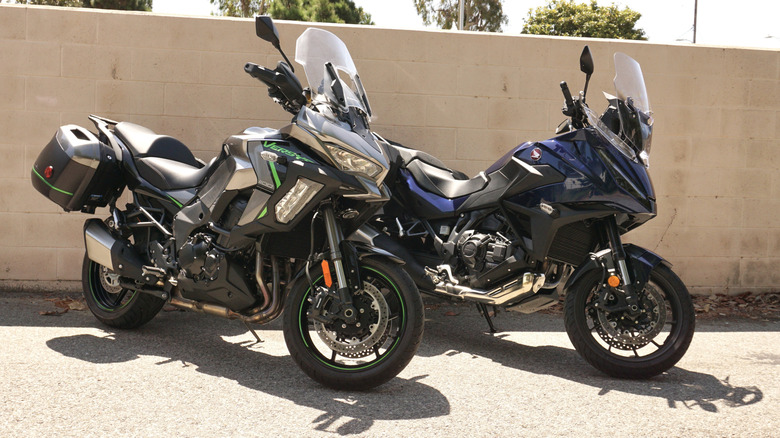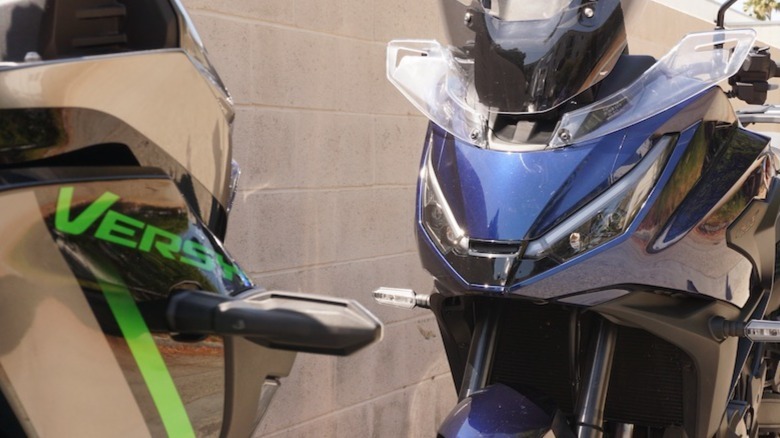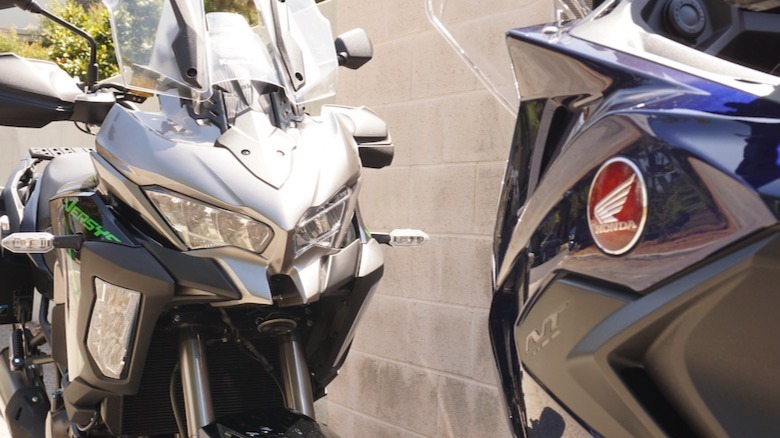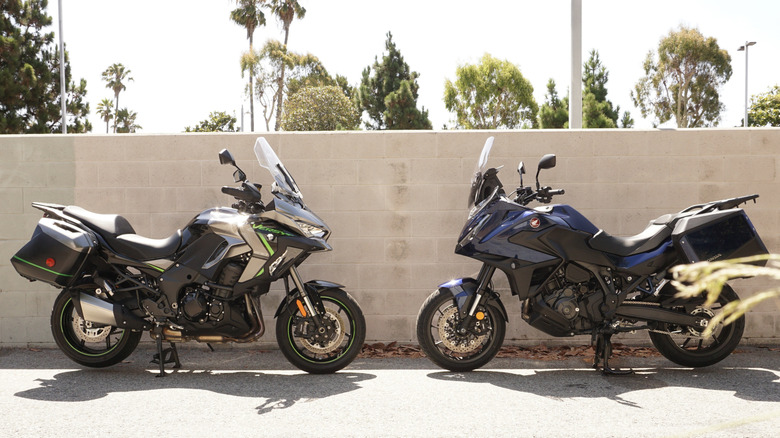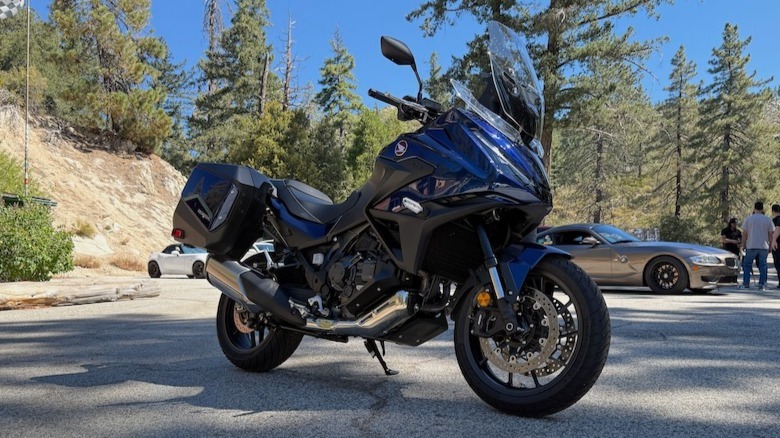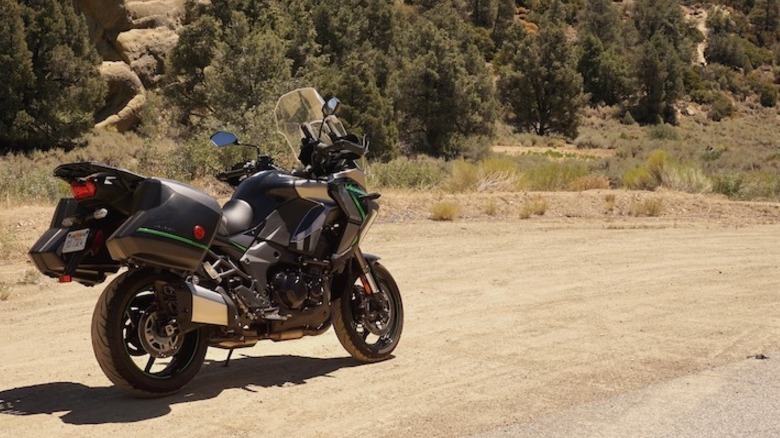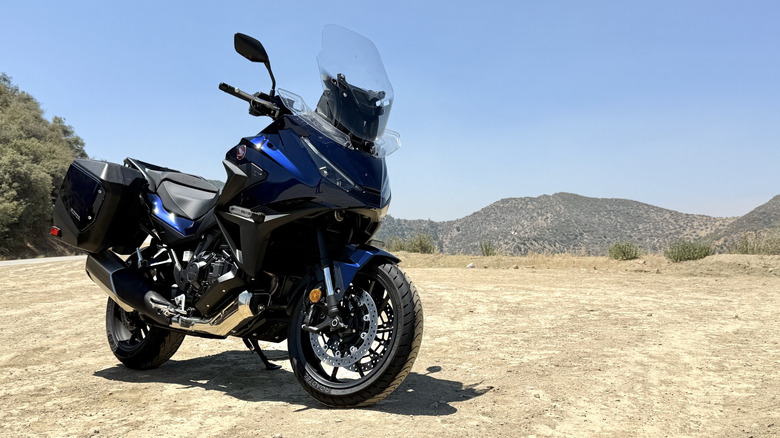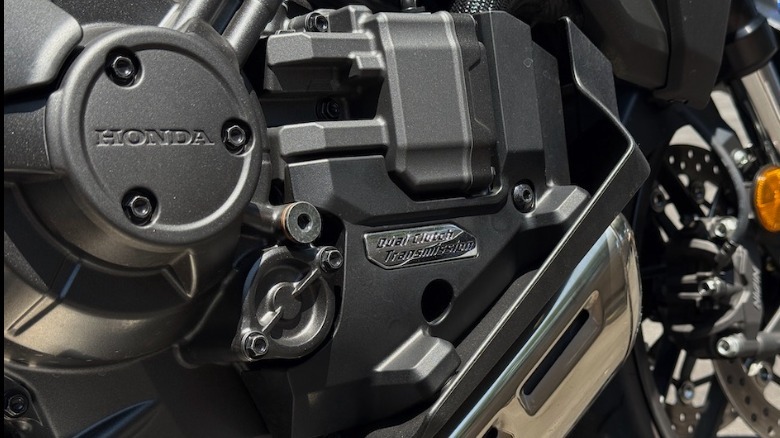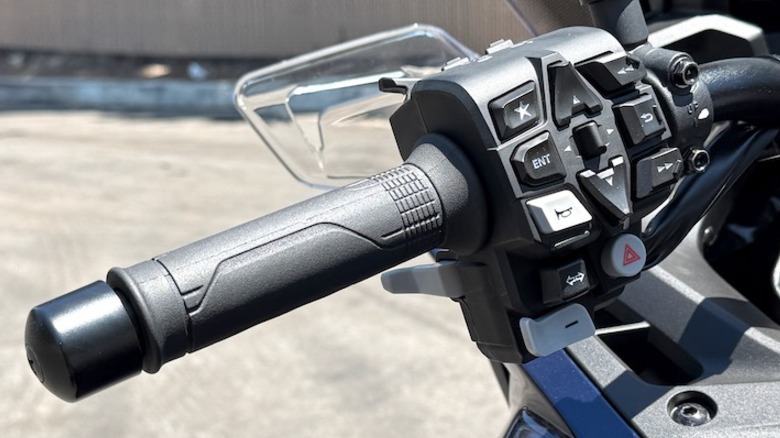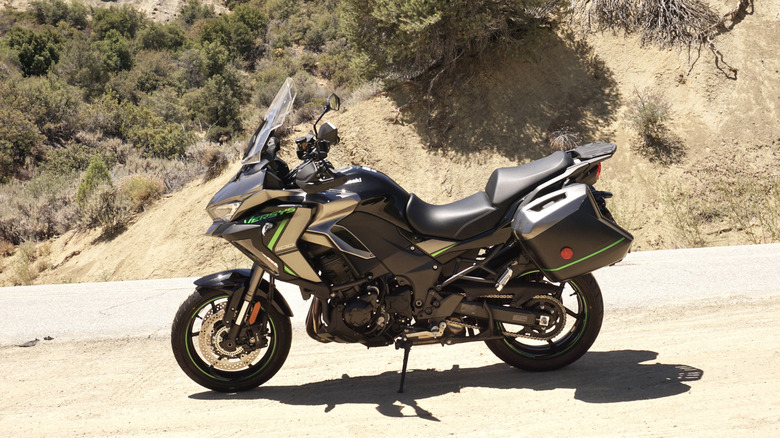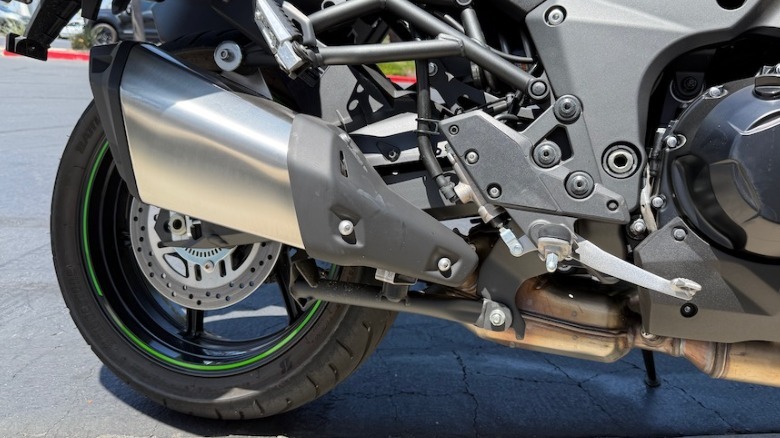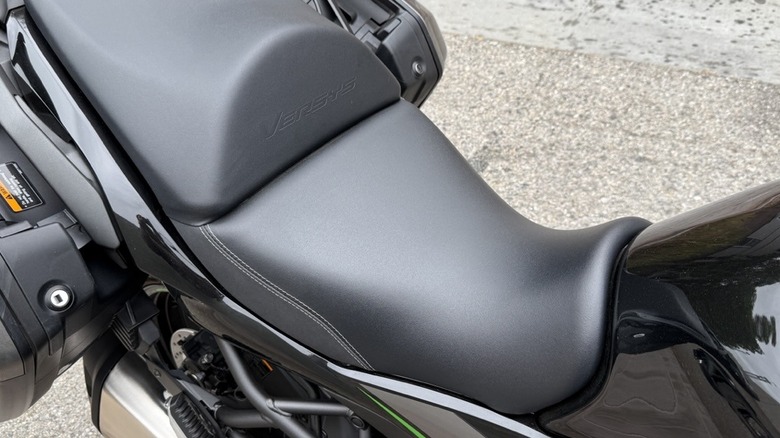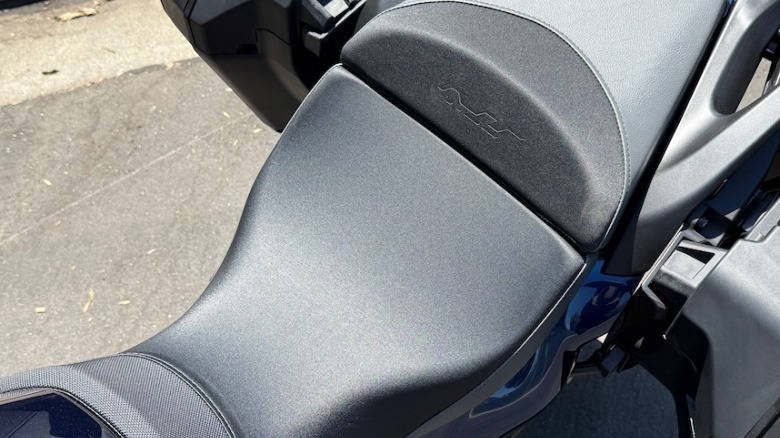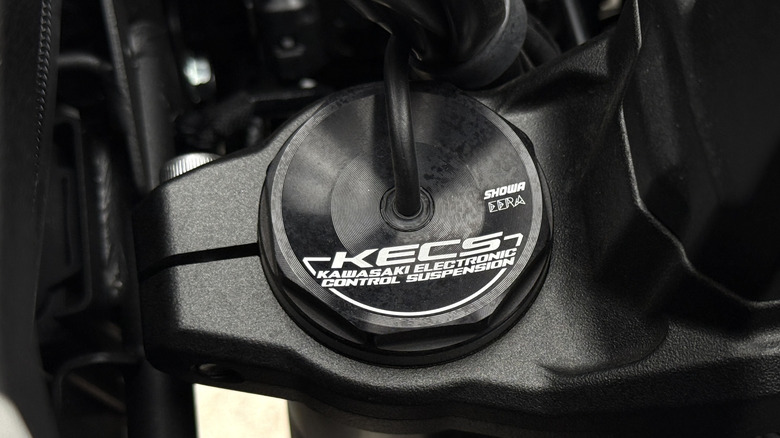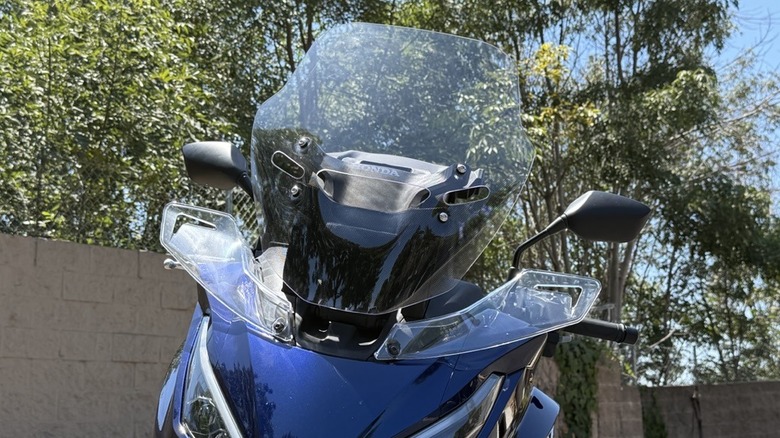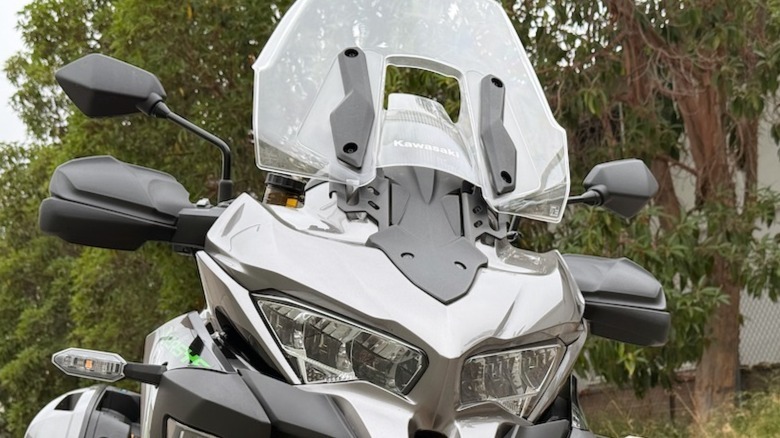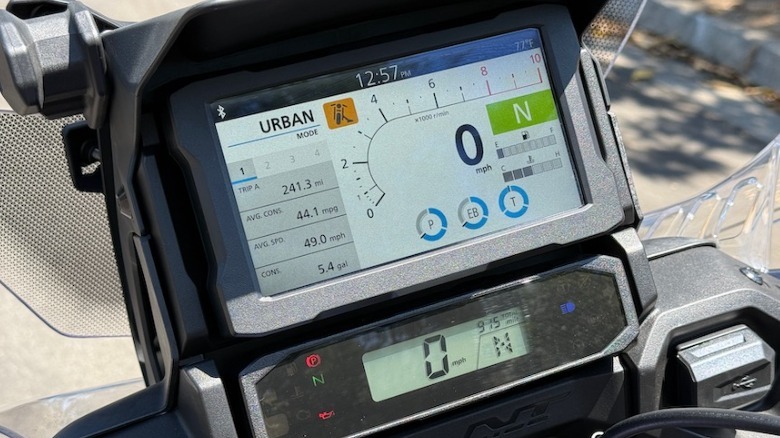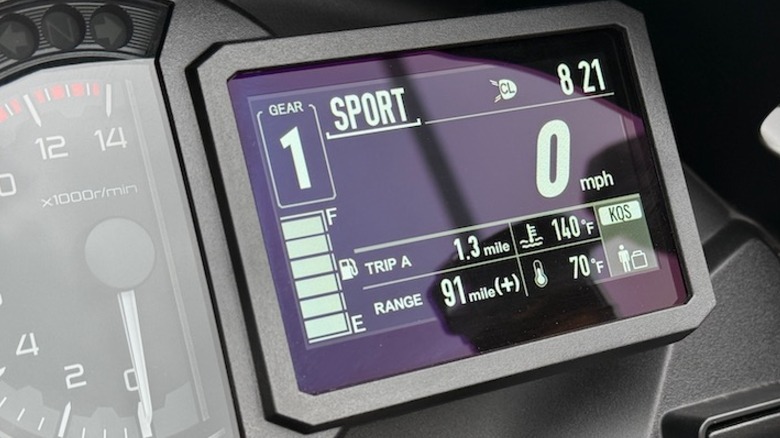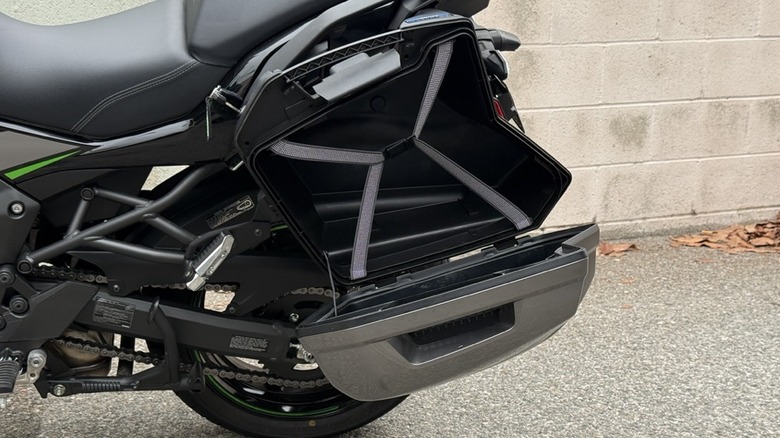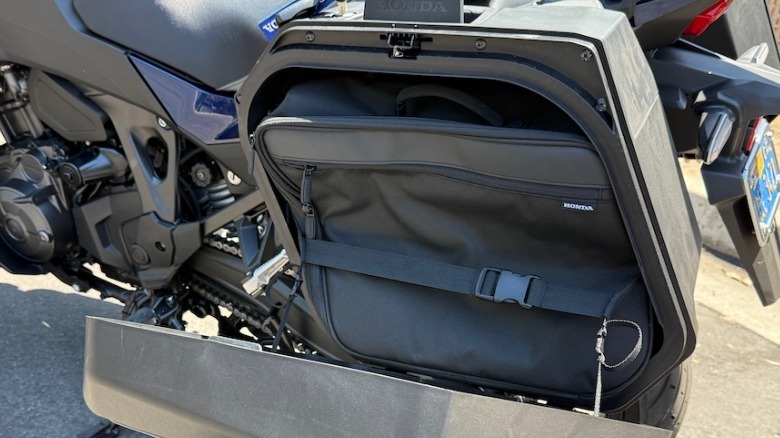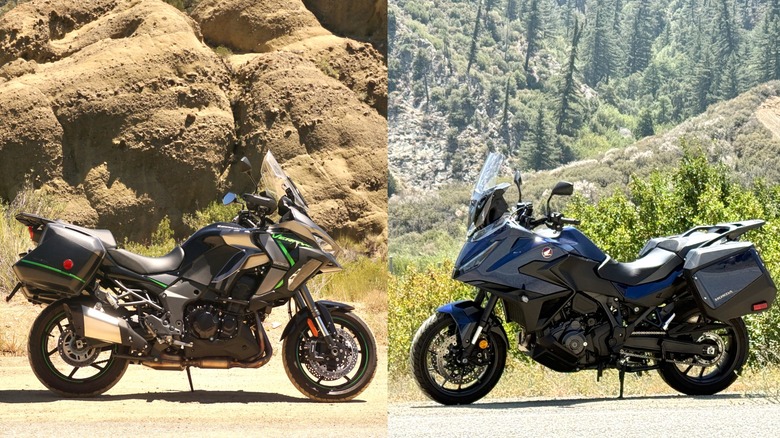2025 Honda NT1100 Vs. 2025 Kawasaki Versys 1100: Is It Worth The Extra Money?
When the folks at Kawasaki and Honda recently released new sporty touring bikes, I was intrigued. And when it turned out that both bikes were available for me to test at the same time, it seemed the universe was setting me up for a "comparison" test. I would ride them both, back-to-back, on the same highways, city streets, and back roads. "Excellent!" I thought, "I'll see which one is best in a head-to-head battle!" But that was a bit ambitious on my part. Especially since these two bikes aren't quite in the same class.
The Honda NT1100 is a new-to-America sport-touring bike with an impressive features list for the money. It's built on the same platform as the Africa Twin and if you don't count Honda's adventure/dual sport offerings, the NT makes a nice bridge between smaller adventure bikes and big flagship bikes like the Gold Wing.
The Kawasaki Versys, though, is much better established here in the U.S. There are several available sizes of the Versys, including the 1100 which has been updated with more power for 2025. It comes at a much higher price than the NT1100 though. Dollar for dollar, the Honda Africa Twin (especially the Sport ES trim) is a better rival for the Versys, but the Africa Twin is aimed a bit more at mixed-road riding with knobby tires and wire wheels for off-roading. So, we're left in a bit of an in-between space.
Starting off with common ground
Thankfully, both the Honda and the Kawasaki are proper sport touring bikes. Commuting, riding up coastal roads, and dashing through the mountains were all on the menu with both bikes. They're both designed with a bit of fun and adventure in mind, with that adventure likely sticking to paved roads. The Versys 1100 is significantly more expensive than the NT1100, but for me, that was part of what made a comparison interesting.
The Honda NT1100, while I wouldn't exactly call it an underdog, is the more affordable option between these two bikes by a wide margin. It has a starting price of $12,674 (including $775 destination fee), but the bike I rode had a few extras. Adding the hard side cases, and the specially-fitted luggage made just for the Honda panniers, as well as the key and the mounting kit, that's all an extra $1,338.15. Total MSRP for the bike? $13,237.
For a 2025 Versys, the MSRP is $20,314 (including $815 destination fee). Kawi's side cases are a bit less at $849.15, but the total as-tested price comes out to $21,163.15 — a difference of nearly $8,000. That's enough to buy another motorcycle entirely (a small one, anyway). So the important question then arose: Do you have to spend over $20,000 for a proper sport touring machine? Or can it be done on a significantly smaller budget with similar results?
Price precedes power
Powering the NT1100 is a 1,084cc parallel-twin (two-cylinder) engine. The parallel-twin isn't particularly eager to accelerate, nor is it what I'd characterize as exciting, but it's plenty gutsy — especially when it comes to low- and mid-range torque. Honda US doesn't list power numbers for the NT1100, but Honda UK does; they have it at 100 horsepower and 82 lb-ft of torque (75 kW and 112 Nm). That's respectable for the class, but not overkill.
The parallel-twin is the same basic engine that powers the Africa Twin, and it has the same thumpy exhaust note. The NT1100 is available exclusively with a six-speed DCT (dual clutch transmission) that does the shifting for you. In the city and in stop-and-go traffic, the torque delivery pairs extremely well with the automatic gearbox, especially in the aptly named "Urban" mode which is Honda's middle setting for power and engine braking.
If you want to make your own gear selections while you're darting through canyons, the NT1100 has a manual mode too. It can be controlled via a few buttons on the handlebars and, while it's not exactly a purist-friendly solution, it lets you hold revs a little longer and stick to the liveliest part of the NT's powerband. In the full-power Tour mode with the DCT doing the gear selection, I never experienced an errant mid-corner upshift and power delivery was smooth across all six gears.
Getting more oomph for your money
In stark contrast to the Honda's relatively relaxed power delivery, the Versys was keen to tackle every straightaway and dash out of every corner. The Kawasaki's 1,099cc four-cylinder engine puts out 133 hp and 82.5 lb-ft of torque. The Versys weighs a bit more than the NT (571 lbs for the Versys compared to the NT's 547 lbs) but the big green touring bike absolutely blasts towards triple-digit speeds with a simple flick of your wrist.
Multiple power modes allow for smooth application of power or quick, responsive throttle inputs and the extra power contributes to a more engaging riding experience, especially on twisty roads. It's not as aggressive as the Ninja 1100SX I reviewed a few months back, but the Versys is still properly fast.
Instead of a DCT, the Versys uses a tried-and-true six-speed manual transmission with a quick shifter that was utterly flawless during my testing. The slightest push of my boot in either direction and it snapped up or down a gear in the smoothest possible manner. The hefty four-cylinder engine doesn't exactly scream towards redline on your way to upshifts, but it has a much more enthusiast-friendly exhaust note — one that would probably sound pretty good when paired with an aftermarket exhaust.
Comfort is a toss up
Even with several days of riding both bikes over the same stretches of highway, it was tough to determine which bike was more comfortable for long-distance jaunts. The riding position on both bikes is relatively upright, with high handlebars that kept my weight off my wrists on long freeway rides. The NT's seat height of 32.3 inches favors shorter riders, but the Versys' seat height of 33.1 inches isn't exactly a dealbreaker, even with my 30-inch inseam.
For me, an interesting distinction between the two bikes was their respective seat shapes: the NT's seat is the wider of the two, but it has firmer initial padding and more aggressive angles on the seat's surface. In the real world, that meant slightly pinched thighs while riding the Honda. Also, flat-footing it on the shorter Honda seat was actually harder than it was on the taller Kawasaki. The Kawi's narrow seat meant my legs could more easily reach the ground.
The Kawasaki's seat also had slightly-softer seat padding so it was initially a bit better, but it was a dead heat when it came to seat comfort on 100-mile-plus rides. In short, these are both excellent long-distance touring bikes but there are slight differences depending on how each bike fits your body.
Ride and handling widens the gap
Both the Honda and the Kawasaki have 5.9 inches of suspension travel in the front and the rear, which was plenty to soak up all the straight-line bumps I could throw at them. The Honda falls behind, though, in that it only offers preload adjustments. The Kawasaki offers adjustability for rebound and compression damping, and electronically-adjustable preload, which gives it a slight edge. Still, in terms of touring comfort the difference is minimal.
Where it does make a noticeable difference, however, is in how impressive the Versys is around corners. It has quick turn in for such a large bike and confidence through the corners is unflappable. Even through some high-speed corners when I hit a bump or crack, the Versys was unfazed. On the same roads, going through the same corners, the NT was a bit less composed.
After a few mid-corner shakes and shimmies, I felt less bold on the Honda. Instead of leaning over, looking through the corner, and gently guiding the bike to higher speeds, I was concerned with all the road's imperfections. More than once, I caught myself riding slower than necessary. I never felt unsafe riding the NT, just a bit less connected to the experience when it came to sporty riding.
Ergonomics and tech
Like every sport-tourer should, both the Versys and NT come standard with adjustable windscreens (both of which are manual). They're great for blocking wind on long rides and rain, if that sort of thing happens where you live. Though, on hot days (a more common scenario where I'm at), I wished the windscreens on both bikes dropped a bit lower for more airflow. The Kawasaki's hand protection meant there wasn't much airflow to my gloves either — a double-edged sword of protection in the cold and stagnant air in hotter weather.
Both bikes come with heated grips and cruise control — respectable and fairly common creature comforts these days — and the cruise control functions worked well on both bikes. On long stretches of highway, I've started to embrace motorcycle cruise control, especially when I need to give my right wrist a rest.
Both bikes have large, legible, easy-to-use TFT screens. The Honda's screen is significantly larger though, and offers Apple CarPlay/Android Auto connectivity, so it wins that tech battle. The Versys does claw back a fair bit in usability, though. It has the advantage of a more intuitive user interface controlled via logically-placed buttons that are easier to understand and use. The Honda's system took a bit more time for me to get used to and the tightly-packed controls meant I'd often hit the wrong one while wearing even the thinnest of summer gloves.
Packing a few extra shirts
If you're a chronic over-packer like I am, this bit may sway you towards the Honda. Both the Versys and the NT I tested came with optional pannier cases (aka side cases). They're removable and both use a relatively simple system to latch onto the bike itself. The Kawasaki's side cases are the smaller of the two, offering 28 liters of space. They're shaped in a pretty stylized way though, with an angular intrusion in the back that changes the size of luggage or cargo you can bring with you. Specifically, the small backpack that usually carries my water, first-aid kit, and flat-tire repair provisions, wouldn't fit in the Kawasaki's side case.
The Honda's side cases are larger: 32 liters on one side, 33 liters on the other. The backpack easily fit in the Honda's side cases, but ironically, I didn't need it. The Honda cases are also available with inner bags that you can easily remove, bring inside your home, and pack up with all your gear before you set off. It's basically custom luggage built specifically for your bike – a helpful touch if you want to pack ahead of your next road trip without the need to take the entire side case off the bike and bring it inside.
The Verdict
The NT1100 is a practical, affordable, and comfortable long-distance touring bike. If you want to commute daily to work daily and cross continents on your summer break, the NT is up to the task. It'll even provide a bit of fun around a winding back road along the way. It offers that impressive skill set with a highly-competitive price too, undercutting the only other Honda Touring bike (the excellent but expensive Gold Wing) by a massive margin.
The Versys 1100 offers an engaging, sporty, precise experience. It covers long distances without issue, but its higher price might be a stumbling block for some buyers. The extra money is well spent though, on impressive suspension hardware, and a big gob of extra power.
Remember the question I asked earlier? "Do you have to spend over $20,000 for a proper sport touring machine?" The answer: absolutely not. The Honda NT1100 proves that lots of fun and adventure can be had for much less. But the Versys 1100 proves that when you spend the extra cash, you'll have a little extra spark of joy every time you ride.
